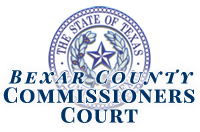If you aren’t keeping up with CPS Energy, it’s time to pay attention.
Our city-owned utility is preparing to make decisions that could have significant effects on many customers’ pocketbooks. When the Covid-19 pandemic struck, CPS Energy rightly placed a moratorium on disconnections for non-payment. The moratorium is ending soon as the utility deals with $100 million in customer delinquencies.
The problem is the pandemic isn’t completely over yet. Things are definitely going in the right direction as Covid cases dramatically decline, but thousands of families and small businesses are still trying to recover financial losses from the crisis. CPS Energy’s decision to end the moratorium on disconnections will be alarming and difficult for many of San Antonio’s working class and poor families.
This isn’t a one-time thing. According to Deceleration News, electricity disconnections in San Antonio have doubled during CEO Paula Gold-Williams’ tenure. CPS Energy has claimed that, because of soaring temperatures, they do not disconnect customers’ power during July and August. History shows otherwise. In 2012, the hottest year on record for Texas, 12,000 homes and businesses had their power cut off by CPS Energy for non-payment in June, July and August of that same year, Deceleration News reported.
On top of this hardship, CPS Energy CEO Paula Gold-Williams has said the utility will ask the city council to impose a rate hike on its customers by this fall.
And let’s not forget, Winter Storm Uri, which blasted Texas in February and left millions shivering in the dark, caught CPS Energy and the city flat-footed. The deadly storm, which killed at least a hundred Texans, and likely many more, left more than 300,000 San Antonio residents without electricity for days. Now, CPS Energy is facing nearly a $1 billion dollar tab because it owes suppliers for overpriced natural gas and electricity they were forced to buy during the storm.
In stark contrast to CPS, Austin Energy made $50 million during the freeze. While it’s hard to stomach the idea of anyone profiting while people were left freezing in the dark for days, at least Austin Energy’s customers are not facing a rate hike because their utility was unprepared and plunged into debt. That’s because Austin Energy’s power plants were winterized and prepared for the extreme weather.
The pandemic and Winter Storm Uri are putting financial pressure on CPS Energy to start cutting off people’s electricity even as we come into the scorching hot Texas summer. In May’s meeting of the board of trustees, Gold-Williams – who makes more than $800,000 per year – said CPS will need to impose a customer rate hike to make up for the losses. But before it can raise rates, CPS Energy’s leadership must ask the board of trustees for approval. If the board gives the green light, the rate request goes to city council for a vote. City council shouldn’t approve any rate hike until our rate structure is fair and considers the most vulnerable rate payers. Customers that use the most electricity pay the least. This doesn’t incentivize conservation or efficiency.
Recently, CPS Energy formed a citizen Rate Advisory Committee. The 21-member committee met for the first time late last month. It is tasked with giving CPS Energy input and recommendations on rate structure and power generation.
The rate advisory committee’s work comes at a critical time for all customers, so we should all be paying attention to the decisions being made for us.
DeeDee Belmares is Public Citizen’s climate justice organizer in San Antonio.
CPS Citizen Rate Advisory Committee Comenses












